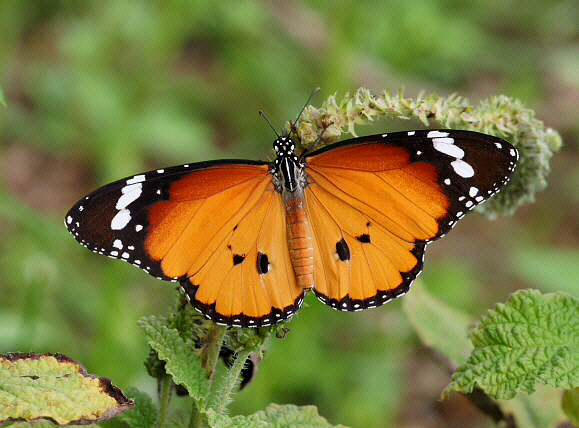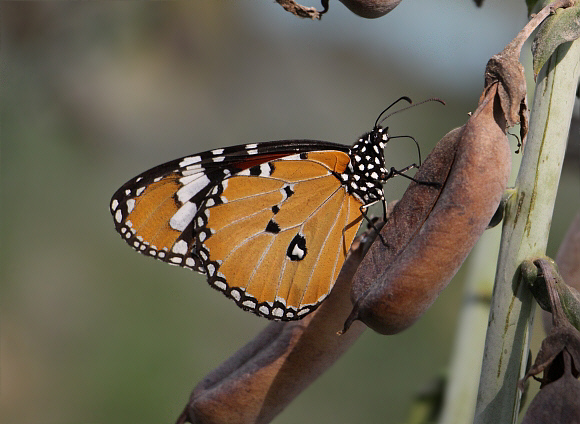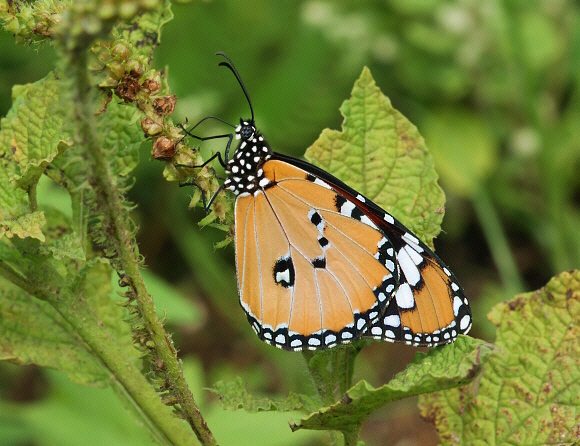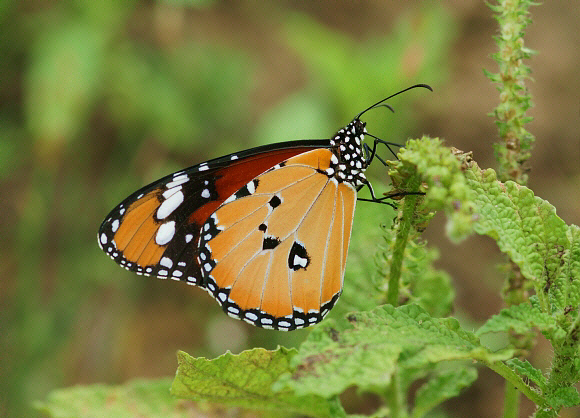
Introduction
The subfamily Danainae, which includes the Monarchs & Tigers, Nymphs and Crows, comprises of about 190 species worldwide.
Monarchs and Tigers belong to the genus Danaus. They are large butterflies, characterised by their orange wings, which have a black apex, and white subapical spots. On the males there is a patch of raised androconial ( pheromone emitting ) scales on the hindwings.
All butterflies in this subfamily are thought to be toxic or distasteful to avian predators. Their bodies contain toxins derived from the larval foodplants, often supplemented by further toxins derived from pyrrolizidine alkaloids in adult food sources.
The bright colours of the butterflies advertise their poisonous qualities to birds in the same way that the bands of yellow and black of wasps advertise the fact that they can sting. Any bird that suffers the unpleasant experience of tasting a Danaus is unlikely to attack any similarly coloured butterfly, so the advertising is beneficial to chrysippus – and to species which mimic it, such as Hypolimnas misippus.
This form of defence is called Batesian mimicry. It is only effective because the toxic species far outnumber the non-toxic species. If the situation was reversed, and most of the butterflies attacked were palatable, the mimicry would serve no purpose.
Danaus chrysippus is found across the entire African continent, throughout most of Asia south of the Himalayas, on most of the islands of the south Pacific, and across much of Australia.

Habitats
This species occurs in many habitats ranging from deserts to savannah grasslands, dry deciduous woodlands, humid sub-tropical forests, gardens, parks and cities at altitudes between sea level and about 1500m.
Lifecycle
The larval foodplants include most genera of Periplocaceae and Asclepiadaceae. Some species of these plants contain cardenolides ( heart depressants ) which are sequestered by the larvae and passed on to the adult butterflies. Other species used by the larvae however do not contain these cardenolides, consequently some adults are inherently toxic, while others are harmless and edible. In fact about 80% of adults are non-toxic at the time of emergence. During their lifetimes however all adults obtain pyrrolizidine alkaloids and other toxins which they sequester from various plants.

The caterpillars of chrysippus are attacked by the host-specific parasitoid wasp Apanteles chrysippi which accounts for about 85% of larval mortality.
Adult behaviour
The butterflies are usually encountered in three’s and four’s in the wet season, but can be found in greater numbers during the dry season, when they often outnumber all other species, especially in savannah / woodland and thorn scrub habitats.
They have a slow undulating flight, with fairly shallow wing beats. Both sexes patrol flowery areas, alighting periodically to take nectar, or to imbibe fluid from ergot on the leaves and stems.
In overcast weather, or when roosting overnight, they hang suspended from twigs or grass stems, in sheltered forest edge habitats, sometimes in groups of half a dozen or more individuals.

